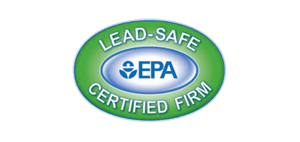Water damage can be a devastating experience for any homeowner. In the event of water damage, it’s important to understand the difference between mitigation and remediation. While both terms may seem interchangeable, there are distinct differences that can impact the effectiveness of your response to water damage.
Mitigation refers to the immediate actions taken to reduce the impact of water intrusion and prevent further damage. Remediation, on the other hand, involves the comprehensive restoration of a property after water damage has occurred.
Understanding the difference between these terms is essential for protecting your home from the devastating effects of water damage. In this article, we will explore the specific differences between mitigation and remediation, as well as the importance of timely and professional assistance.
Key Takeaways:
- Mitigation involves immediate actions to reduce water damage while remediation involves comprehensive restoration of a property after water damage has occurred.
- Timely action is crucial for both mitigation and remediation processes for effective damage control.
- Professional assistance is highly recommended for both mitigation and remediation due to the complex nature of water damage.
- Effective mitigation can prevent further damage and potential health hazards.
- Remediation aims to mitigate the long-term effects of water damage and ensure the property is safe and habitable.
Defining Mitigation of Water Damage
When it comes to dealing with water damage, understanding the difference between mitigation and remediation is essential. Mitigation refers to the actions taken to minimize or prevent further damage caused by water intrusion. It focuses on reducing the impact of water and preventing additional issues from arising.
For example:
| Mitigation | Remediation |
|---|---|
| Drying wet carpets and flooring | Removing and replacing water-damaged carpets and flooring |
| Setting up fans and dehumidifiers to dry out the affected area | Cleaning and disinfecting walls, floors, and other surfaces to prevent mold growth |
| Removing wet electronics and appliances to prevent electrical hazards | Repairing or replacing damaged pipes, wiring, and HVAC systems |
By taking immediate mitigation steps, you can prevent further damage and reduce the overall cost of restoration. However, it’s important to note that mitigation alone may not fully address the problem and that remediation may still be necessary to restore the property to its pre-damaged condition.
The Process of Mitigation
When it comes to water damage, mitigation is all about taking immediate action to prevent further damage and minimize its impact on your home or property. The mitigation process involves several crucial steps, which we will explore in detail below:
| Step | Description |
|---|---|
| Assessment | A qualified technician will assess the extent of the water damage to determine the proper course of action. They will identify the source of the water intrusion and check for any safety hazards, such as exposed wiring or structural damage. |
| Water Extraction | If there is standing water in your home or property, it needs to be removed as quickly as possible to prevent further damage. A professional water restoration team will use advanced equipment, such as pumps and vacuums, to extract the water safely and thoroughly. |
| Drying | Once the water has been extracted, the affected areas need to be dried using specialized equipment, such as dehumidifiers and air movers. This is a crucial step to prevent mold growth and further damage to your property. |
| Preventive Measures | During the mitigation process, preventive measures such as boarding up windows, tarping roofs, and sealing off affected areas, may be implemented to prevent further water intrusion and protect your property from potential theft or vandalism. |
Overall, the mitigation process is focused on reducing immediate damage and preventing future issues. By acting quickly and seeking professional assistance, you can mitigate water damage effectively and ensure a successful restoration process.
Understanding Remediation of Water Damage
If your home has suffered water damage, you need to know about remediation. Remediation is the process of restoring your property to its pre-damaged condition. It is a comprehensive cleanup, repair, and restoration process that aims to mitigate the long-term effects of water damage.
It’s important to understand that water damage is not just a cosmetic problem. Without proper remediation, water damage can lead to structural deterioration and mold growth, which can have serious health consequences. This is why it’s crucial to address water damage as soon as possible and seek professional assistance for remediation.
Professional water damage restoration companies have the knowledge, expertise, and specialized equipment to effectively remediate the damage and restore your property. They follow industry-standard protocols to ensure thorough and effective remediation, which includes:
- Water removal: The first step in the remediation process is water removal. All standing water should be removed to prevent further damage and mitigate the risk of mold growth.
- Structural drying: The affected areas must be thoroughly dried to prevent moisture from spreading and causing additional damage.
- Cleaning and sanitizing: All affected surfaces should be cleaned and sanitized to prevent the growth of mold and other harmful contaminants.
- Repairing or replacing damaged materials: Any damaged materials, such as flooring or drywall, should be repaired or replaced as necessary.
- Conducting necessary repairs: After the cleanup and restoration process is complete, any necessary repairs should be conducted to restore the property to its pre-damaged condition.
Remediation is a time-sensitive process, so it’s crucial to initiate it as soon as possible after water damage occurs. Delaying remediation can lead to further damage and increase the risk of long-term problems. Seek professional assistance for remediation to ensure a successful restoration of your property.
The Steps Involved in Remediation
Water damage can cause significant harm to your property, but timely remediation is essential to restore it to its pre-damaged condition. Here are the steps involved in the remediation process:
| Step | Description |
|---|---|
| Step 1: Water Removal | The first step in remediation is removing any standing water from the affected area. This can be done using specialized equipment such as pumps and vacuums. |
| Step 2: Structural Drying | The next step is drying out the structural components of your property. This may involve the use of dehumidifiers, fans, and other drying equipment. |
| Step 3: Cleaning and Sanitizing | After the area is dry, any affected surfaces should be thoroughly cleaned and sanitized to prevent the growth of mold and bacteria. |
| Step 4: Material Removal and Replacement | If any structural components or materials have been irreparably damaged, they will need to be removed and replaced to ensure the safety and integrity of your property. |
| Step 5: Repairs and Restoration | Finally, any necessary repairs and restoration work can be completed to return your property to its pre-damaged condition. |
By following these steps, a professional water damage restoration company can successfully remediate the damage and ensure your property is safe and habitable once again.
It’s important to note that the remediation process can vary depending on the extent and severity of the damage. A qualified restoration professional can assess the situation and determine the most effective course of action for your specific needs.
Timing and Importance of Mitigation and Remediation
When it comes to water damage, timing is crucial. Both mitigation and remediation should be initiated as soon as possible after the damage occurs. Delaying these processes can lead to further damage, health hazards, and more significant expenses in the long run.
The importance of mitigation and remediation cannot be overstated. Prompt mitigation can help prevent the spread of moisture and mold growth. Meanwhile, timely remediation ensures the proper restoration of the property and reduces the risk of long-term issues such as structural deterioration. In addition, documenting the damage and restoration process is crucial for insurance purposes.
| Timing | Importance |
|---|---|
| Prompt mitigation | Prevents further damage and health hazards |
| Timely remediation | Ensures proper restoration and reduces risk of long-term issues |
As a homeowner, it’s important to be informed about the timing and critical nature of mitigation and remediation. By seeking professional assistance and acting quickly, you can protect your property and avoid the devastating effects of water damage.
Professional Assistance for Mitigation and Remediation
Dealing with water damage can be a complex and challenging process. As such, it’s highly recommended to seek professional assistance for both mitigation and remediation. Experienced water damage restoration companies have the knowledge, expertise, and specialized equipment to effectively mitigate the damage and restore your property to its pre-loss condition.
When it comes to mitigation, professionals can quickly assess the extent of the damage and take appropriate measures to minimize its impact. They can also implement preventive strategies to mitigate the spread of moisture and mold growth, reducing the risk of long-term issues and potential health hazards.
During the remediation process, professionals follow industry-standard protocols to ensure thorough and effective restoration of the property. They use advanced equipment and techniques to remove water, dry affected areas, and repair or replace damaged materials. They also clean and sanitize affected surfaces to ensure a safe and habitable environment.
Seeking professional assistance for both mitigation and remediation is essential for mitigating water damage effectively and ensuring a successful restoration process. Professionals can help you navigate the complexities of the process and ensure your home is safe and habitable in the long run.
Conclusion
Water damage can cause severe harm to your property and lead to numerous health hazards. Mitigation and remediation are two crucial processes that can help minimize the damage and restore your property to its pre-loss condition. It is important to understand the key differences between these terms to effectively protect your home from water damage.
Mitigation focuses on minimizing the damage caused by water and preventing further issues from arising. This includes immediate actions such as water extraction, drying, and temporary repairs to prevent additional water infiltration. The process of mitigation involves assessing the extent of water damage, identifying potential risks, and implementing measures to minimize the damage.
Remediation, on the other hand, involves the comprehensive cleanup, repair, and restoration of all affected areas. It aims to mitigate the long-term effects of water damage and ensure the property is safe and habitable. The steps involved in remediation include water removal, structural drying, cleaning and sanitizing affected surfaces, and repairing or replacing damaged materials.
Prompt action and seeking professional assistance are key to mitigating water damage effectively and ensuring a successful remediation process. Experienced water damage restoration companies have the knowledge, expertise, and specialized equipment to effectively mitigate the damage and restore your property. Remember, both mitigation and remediation are time-sensitive processes that should be initiated as soon as possible after water damage occurs.
By understanding the difference between mitigation and remediation, you can take the necessary steps to protect your home from the devastating effects of water damage. Make sure to seek professional assistance and act promptly to ensure the safety and well-being of your property and loved ones.
FAQ
What does mitigation of water damage involve?
Mitigation involves assessing the extent of water damage, identifying risks, removing standing water, drying affected areas, and implementing preventive measures to mitigate the spread of moisture and mold growth.
What is the process of remediation?
Remediation includes water removal, structural drying, cleaning and sanitizing affected surfaces, repairing or replacing damaged materials, and conducting necessary repairs to restore the property.
When should mitigation and remediation be initiated?
Mitigation and remediation should be initiated as soon as possible after water damage occurs to prevent further damage, health hazards, and long-term issues such as mold growth and structural deterioration.
Is professional assistance necessary for mitigation and remediation?
Seeking professional assistance for both mitigation and remediation is highly recommended due to the complex nature of water damage. Professional water damage restoration companies have the expertise and specialized equipment to effectively mitigate the damage and restore the property.



